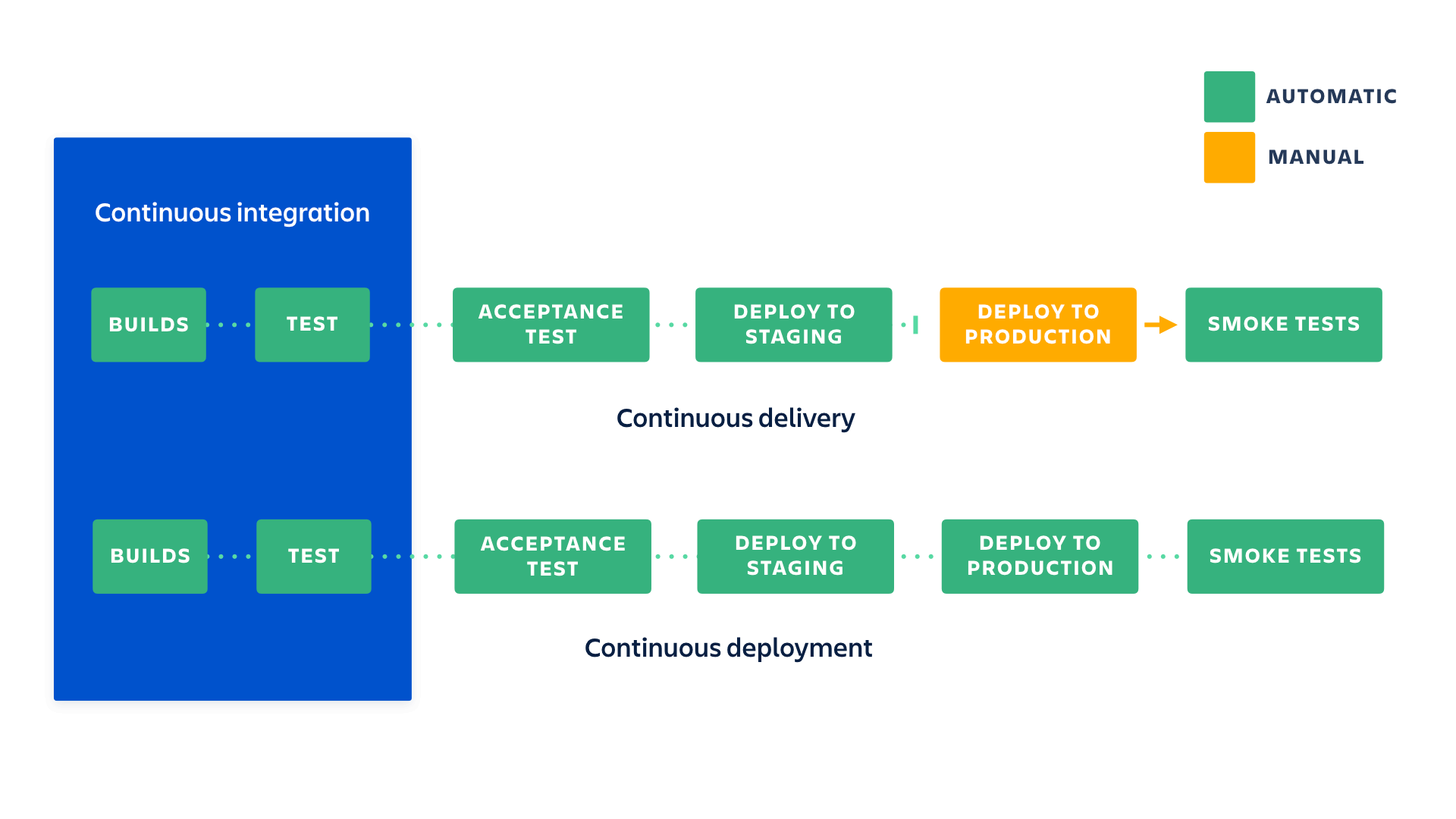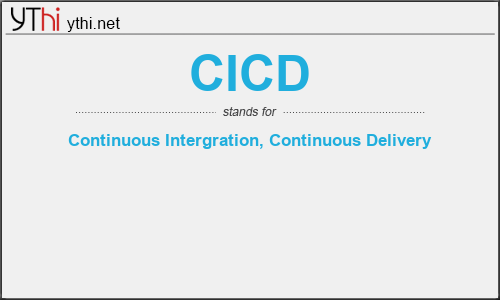What does CICD mean? What is the full form of CICD?
The Full Form of CICD is Continuous Intergration, Continuous Delivery, Continuous Deployment.
In software engineering, continuous integration is the practice of merging all developers’ working copies to a shared mainline several times a day. Grady Booch first proposed the term CI in his 1991 method, although he did not advocate integrating several times a day. Extreme programming adopted the concept of CI and did advocate integrating more than once per day – perhaps as many as tens of times per day.
1, Continuous Intergration
Continuous Integration (CI) is a development practice where developers integrate code into a shared repository frequently, preferably several times a day. Each integration can then be verified by an automated build and automated tests. While automated testing is not strictly part of CI it is typically implied.
One of the key benefits of integrating regularly is that you can detect errors quickly and locate them more easily. As each change introduced is typically small, pinpointing the specific change that introduced a defect can be done quickly.
In recent years CI has become a best practice for software development and is guided by a set of key principles. Among them are revision control, build automation and automated testing.
Additionally, continuous deployment and continuous delivery have developed as best-practices for keeping your application deployable at any point or even pushing your main codebase automatically into production whenever new changes are brought into it. This allows your team to move fast while keeping high quality standards that can be checked automatically.
2, Continuous Delivery
Continuous Delivery is the ability to get changes of all types—including new features, configuration changes, bug fixes and experiments—into production, or into the hands of users, safely and quickly in a sustainable way.
Our goal is to make deployments—whether of a large-scale distributed system, a complex production environment, an embedded system, or an app—predictable, routine affairs that can be performed on demand.
We achieve all this by ensuring our code is always in a deployable state, even in the face of teams of thousands of developers making changes on a daily basis. We thus completely eliminate the integration, testing and hardening phases that traditionally followed “dev complete”, as well as code freezes.
It is the discipline of being able to reliably release application changes (code) at any time. Beyond making sure your application passes automated tests it has to have all the configuration necessary to push it into production. CD encompasses everything from ideation to build to readiness to delivery to production. Automation is implicit. There is no CI+ CD or CI/CD, continuous delivery includes continuous integration practices.
3, Continuous Deployment
Continuous deployment is a strategy for software releases wherein any code commit that passes the automated testing phase is automatically released into the production environment, making changes that are visible to the software’s users.
Continuous deployment eliminates the human safeguards against unproven code in live software. It should only be implemented when the development and IT teams rigorously adhere to production-ready development practices and thorough testing, and when they apply sophisticated, real-time monitoring in production to discover any issues with new releases.
CI and CD are two acronyms frequently used in modern development practices and DevOps. CI stands for continuous integration, a fundamental DevOps best practice where developers frequently merge code changes into a central repository where automated builds and tests run. But CD can either mean continuous delivery or continuous deployment.

CICD
means
Continuous Intergration, Continuous Delivery![]()
Translate Continuous Intergration, Continuous Delivery to other language.


Leave a Reply
You must be logged in to post a comment.